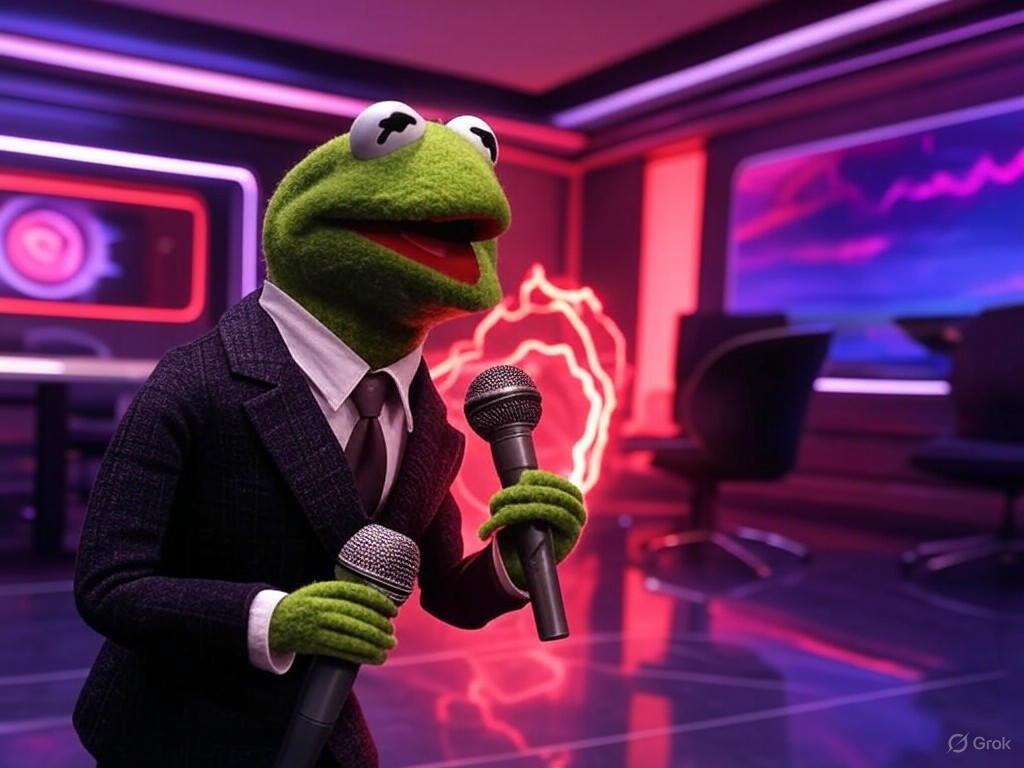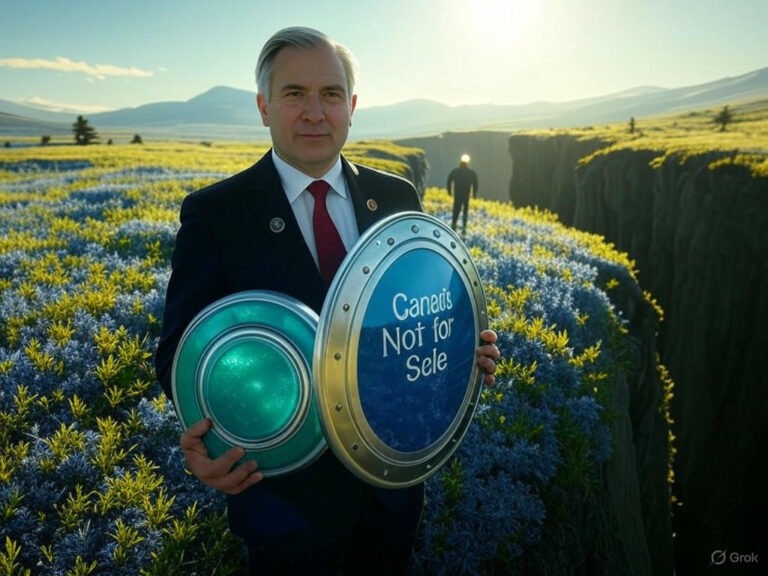
Trump’s Executive Order Blocks PBS and NPR Funding
The Impact of Trump’s Executive Order
Imagine relying on your local PBS station for everything from educational kids’ shows to in-depth community news, only to hear that federal support might vanish overnight. On May 1, 2025, President Donald Trump issued a bold executive order targeting the Corporation for Public Broadcasting (CPB), effectively cutting off funding to public media giants like PBS and NPR. This Trump executive order has thrust the future of impartial journalism into the spotlight, raising questions about government influence and media freedom.
At its core, the order demands that the CPB stop directing federal dollars to NPR and PBS, citing concerns over perceived biases. It’s a move that echoes longstanding political tensions, where critics argue public media leans too far left, while supporters highlight its role in serving underserved communities. What does this mean for everyday Americans? It’s not just about budget cuts—it’s about preserving access to reliable information in an era of misinformation.
Scope and Provisions Under the Trump Executive Order
The Trump executive order outlines specific steps to dismantle federal support for these organizations. According to White House directives, the CPB must immediately halt direct funding to PBS and NPR, along with any indirect channels like grants to local stations. This includes revising guidelines to prevent federal money from trickling down to affiliated programming.
- End all direct federal grants to NPR and PBS.
- Block indirect funding through local public radio and TV affiliates.
- Update 2025 grant rules to eliminate any pathways for supporting these entities.
- Minimize future indirect aid wherever possible.
Assessing the Financial Fallout
The financial stakes are high, with the CPB distributing around half a billion dollars annually to public broadcasters. PBS relies on about 15% of its budget from federal sources, while NPR gets roughly 1%. Still, for many rural stations, this Trump executive order could mean the difference between thriving and shutting down. Have you ever tuned into a PBS documentary that expanded your worldview? Those programs might soon face cutbacks, affecting millions who depend on them for education and entertainment.
Private donations and corporate sponsorships will need to step up, but not everyone has the resources to fill the gap. This shift could disproportionately impact low-income areas, where public media often provides the only accessible news and learning options. It’s a reminder that public broadcasting isn’t just a luxury—it’s a vital public service.
Historical Context of Public Media and the Trump Executive Order
Public broadcasting has long been a battleground in American politics, and the Trump executive order represents the latest escalation. For decades, organizations like NPR and PBS have offered fact-based reporting and educational content, filling gaps left by commercial media. Yet, Republican lawmakers have frequently criticized them for alleged liberal biases, a debate that’s now reached a boiling point.
Think about how PBS’s “Sesame Street” has shaped generations of children—it’s more than entertainment; it’s a tool for early learning. Supporters argue that without federal backing, such programs could disappear, leaving kids in remote areas without these resources. On the flip side, proponents of the Trump executive order see it as a way to stop funding what they view as skewed narratives.
Voices from Capitol Hill
Lawmakers are divided, with figures like Senator Tom Cotton praising the order as a smart move against “far-left propaganda.” Meanwhile, Representative Adam Smith warns it could erode access to unbiased news for everyday Americans. What are your thoughts—should taxpayer dollars support public media, or is it time for a change? These contrasting views highlight the deep partisan rift that’s fueling this controversy.
Legal Challenges and Resistance to the Trump Executive Order
From the moment the Trump executive order was announced, pushback was swift. CPB leaders, including President Patricia Harrison, emphasized that their organization operates independently as a private nonprofit, beyond the president’s direct control. This independence is rooted in congressional authority, making the order a potential overreach of executive power.
“CPB is not a federal executive agency subject to the President’s authority. Congress directly authorized and funded CPB to be a private nonprofit corporation wholly independent of the federal government.” — Patricia Harrison, CPB President & CEO.
Both PBS and NPR are gearing up for legal fights, exploring lawsuits to protect their funding. Courts may soon decide if this Trump executive order violates separation of powers, setting a precedent for future administrations. It’s a high-stakes scenario that could reshape how we view government oversight of media.
How Public Media Might Evolve
If the order holds, what changes could we see? Funding uncertainty might force stations to scale back, particularly in rural communities where alternatives are scarce. A recent study from a reputable source highlights how public media reaches over 160 million Americans monthly—imagine the void if that’s disrupted. This could lead to greater reliance on crowdfunding or corporate partnerships, but at what cost to editorial independence?
Broader Effects on America’s Media Landscape
The Trump executive order isn’t just about budgets; it’s about the soul of public media. Experts predict it could deepen political polarization, with Democrats rallying to defend NPR and PBS in Congress. For audiences, this means potentially less diverse content, from investigative journalism to cultural programming that commercial outlets overlook.
Consider a hypothetical: A small-town resident loses access to NPR’s local news updates, leaving them with only partisan cable channels for information. How does that affect community trust and democracy? Advocates stress the need for balanced, fact-driven media now more than ever, urging viewers to support these organizations through donations or advocacy.
| Organization | Federal Funding Share | Main Revenue Sources | Potential Impact |
|---|---|---|---|
| PBS | 15% | CPB grants, private donations, state/local funding | Significant cuts could jeopardize children’s programming and rural access |
| NPR | 1% | Private donations, corporate sponsorships, some CPB grants | Indirect losses might affect local affiliates, though less severe overall |
What’s Next After the Trump Executive Order?
Moving forward, the White House plans to request Congress rescind allocated funds, setting the stage for legislative battles. This aligns with broader Trump administration efforts to target institutions seen as opposition. Public media supporters are mobilizing, from grassroots campaigns to legal defenses, to safeguard their mission.
If you’re passionate about this issue, consider reaching out to your representatives or donating to PBS and NPR. Small actions can make a big difference in preserving diverse voices. The outcome will likely hinge on court rulings and congressional votes, shaping the future of media independence.
Conclusion and Final Thoughts
The Trump executive order marks a turning point for public broadcasting, challenging its role in fostering an informed society. As debates rage on, remember that public media’s survival depends on community support and policy decisions. What steps can you take to ensure trustworthy news remains available for all?
This isn’t just a political spat—it’s about the stories that unite us and the facts that guide our decisions. I encourage you to share your views in the comments below, explore more on our site, or spread the word to keep the conversation going.
References
- ABC News. “CPB Fires Back at Trump’s Executive Order Pulling Funding.” Link.
- White House. “Ending Taxpayer Subsidization of Biased Media.” Link.
- PBS NewsHour. “Trump Signs Executive Order Directing Federal Funding Cuts to PBS and NPR.” Link.
- CBS News. “Trump Executive Order Cutting Funding to PBS and NPR.” Link.
- Politico. “NPR, PBS Respond to Trump Executive Order.” Link.
- Politico. “Trump Executive Order Cuts Funding to PBS and NPR.” Link.
- White House Fact Sheet. “President Donald J. Trump Ends the Taxpayer Subsidization of Biased Media.” Link.
- Seth’s Blog. “Akimbo Podcast Transcripts.” Link.
Trump executive order, PBS funding, NPR funding, Corporation for Public Broadcasting, public media cuts, Trump administration media policy, federal funding block, public broadcasting debate, media independence, executive order impact






